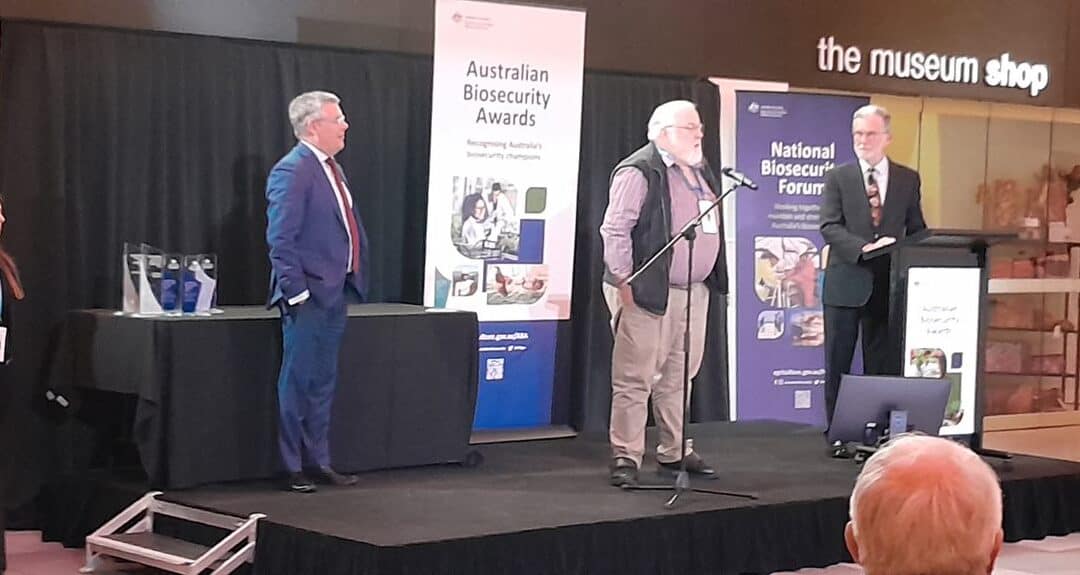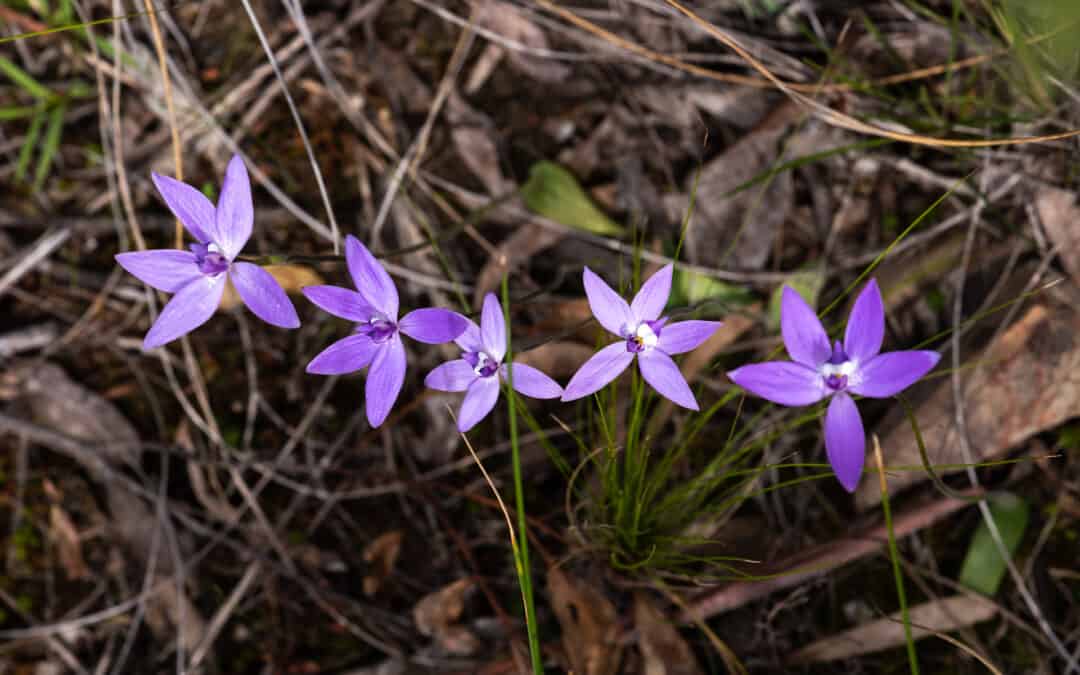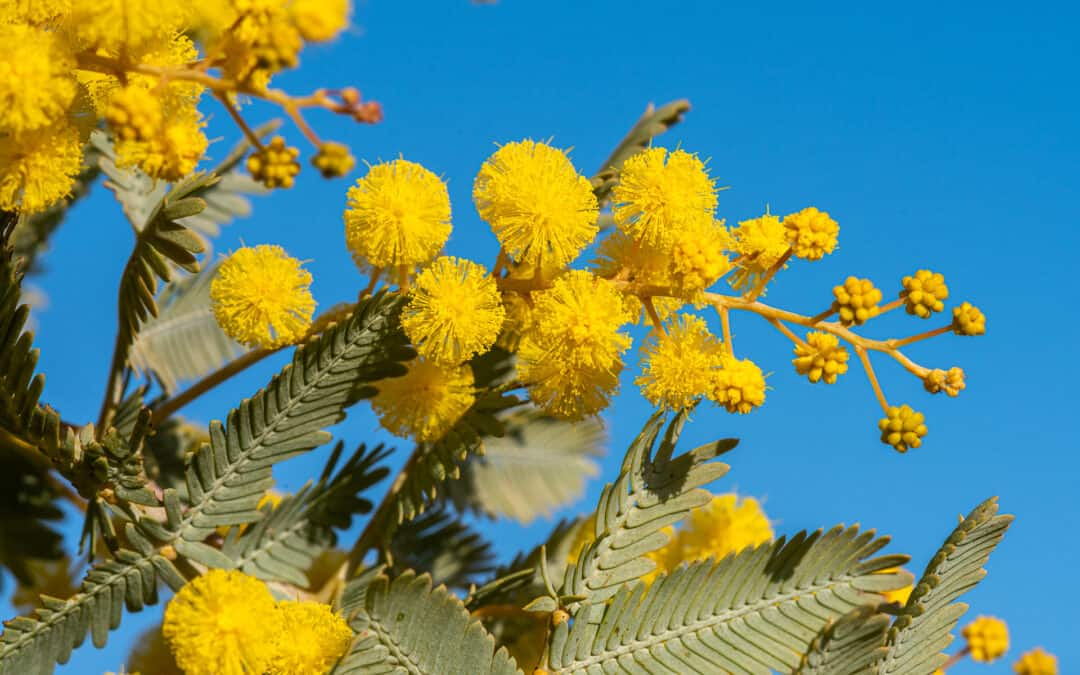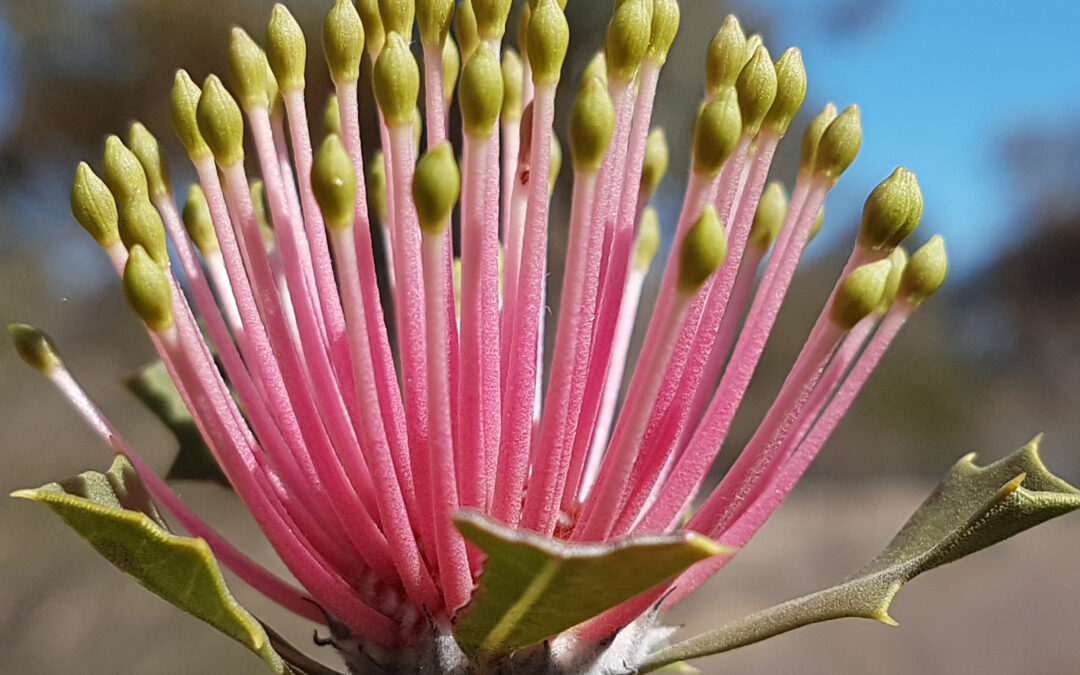
May 2, 2023 | News
We’d love to congratulate Bob Makinson who has received a 2022 Australian Biosecurity Award in the Environmental Biosecurity Category.
Bob has been instrumental in galvanising attention and action for the introduced plant disease myrtle rust (Austropuccinia psidii). He has used his botanical and conservation expertise to raise awareness, and to secure support and funding across community groups, research institutions and governments at all levels. Click here to learn more about the incredible contribution Bob has made and watch a video on his work. Congratulations Bob!
Bob accepting the award, on the right is the MC, Richard Morecroft and on the left is the Minister for Agriculture, Fisheries and Forestry, Senator the Hon. Murray Watt who presented the award (Jo Lynch).

Jun 1, 2023 | News
The 15-21 May was National Volunteer Week. We’d like to give a huge shout out to everyone who volunteers for the ANPC! From helping in the office to providing expert advice at our committee meetings, thank you to all our volunteers this National Volunteer Week and every other week you generously donate your time. Photo by Christine Fernance

May 31, 2023 | News
The Australian Network for Plant Conservation is looking for an enthusiastic person with excellent communication skills and a demonstrated interest in plants and the environment, to fill our Communications Manager position. You will work closely with our Business Manager at the ANPC’s national office in the beautiful Australian National Botanic Gardens in Canberra. This is a part-time position (21hrs per week) for a period of 12 months, with possibility of extension depending on funding. Extensive experience in communications management including social media, electronic newsletters, website maintenance and journals is essential. You will also assist with events such as workshops, symposiums and conferences, both in-person and online. Qualifications in biological science and/or science communication are desirable.
Please download the Position Description for more information including how to apply. Applications close 5pm Friday 16 June 2023.

May 2, 2023 | News
A recording of the webinar jointly hosted by the Botanic Gardens Australia and New Zealand (BGANZ) Collections and Records Management group (BCARM), with speakers from the Australian Network for Plant Conservation (ANPC) and the Australian Seed Bank Partnership (ASBP) is now available.
Key takeaways and further information:
Bob Makinson gave an introduction to Myrtle Rust and talked about how Myrtle Rust kills, including its devastating impact on Native Guava (Rhodomyrtus psidioides). He talked through scenarios for different species, including management options, and the long term vision for identification and breeding of resistant genotypes. More info: Myrtle Rust information hub; and Extra slides with key facts, details of host species, and references
Amelia Martyn Yenson shared a new video on the collaborative action providing hope in the face of rapid decline and outlined key project activities to secure collections of Native Guava. Hear about collection of germplasm to preserve genetic variation, propagation of Native Guava collections, and planting of collections in botanic gardens of all scales. Peter Gould and the volunteers of Lismore Rainforest Botanic Garden walked us through their Native Guava collection. Zoe Knapp talked about the benefits of the project including hands-on experience for staff using digital technology, the ability to use living collections for research and education, and the importance of sharing information and using an agreed approach to establish collections. More info: Safe Custody for Native Guava
Bradley Desmond (Acting National Coordinator, Australian Seed Bank Partnership) outlined preliminary results of last year’s stocktake of Myrtaceae collections. The Council of Heads of Australian Botanic Gardens (CHABG) and BGANZ undertook the first country-wide stocktake of Myrtaceae insurance populations, with thanks to the 29 facilities and their staff who shared data. Many facilities are actively monitoring for Myrtle Rust, and respondents shared whether Myrtle Rust had been observed nearby (within 5km). Existing collections of wild sourced species include both whole plants (>13000 accessions) and seed (>8000 accessions). Many priority species identified in the National Action Plan are already established ex situ, with gaps identified to guide future collections. Stay tuned for the final report, via the CHABG website (chabg.org.au) and BGANZ (bganz.org.au).
We’d like to thank our partners for their generous support and commitment to the future of the Native Guava:
This project is supported by funding from the Australian Government.





